
Another week and you won’t find any big VR titles in the charts. The Meta Quest audience still seems to prefer light fare.
The post Meta Quest Charts give VR enthusiasts no reason to be happy appeared first on MIXED Reality News.


Another week and you won’t find any big VR titles in the charts. The Meta Quest audience still seems to prefer light fare.
The post Meta Quest Charts give VR enthusiasts no reason to be happy appeared first on MIXED Reality News.

Sandbox VR breaks milestone, Palmer Luckey unveils military XR headset and PSVR 2 hand tracking in test — the XR highlights of the week.
The post XR weekly round-up: Nvidia RTX 5090 divides VR community, Quest update is here and VR industry in crisis appeared first on MIXED Reality News.
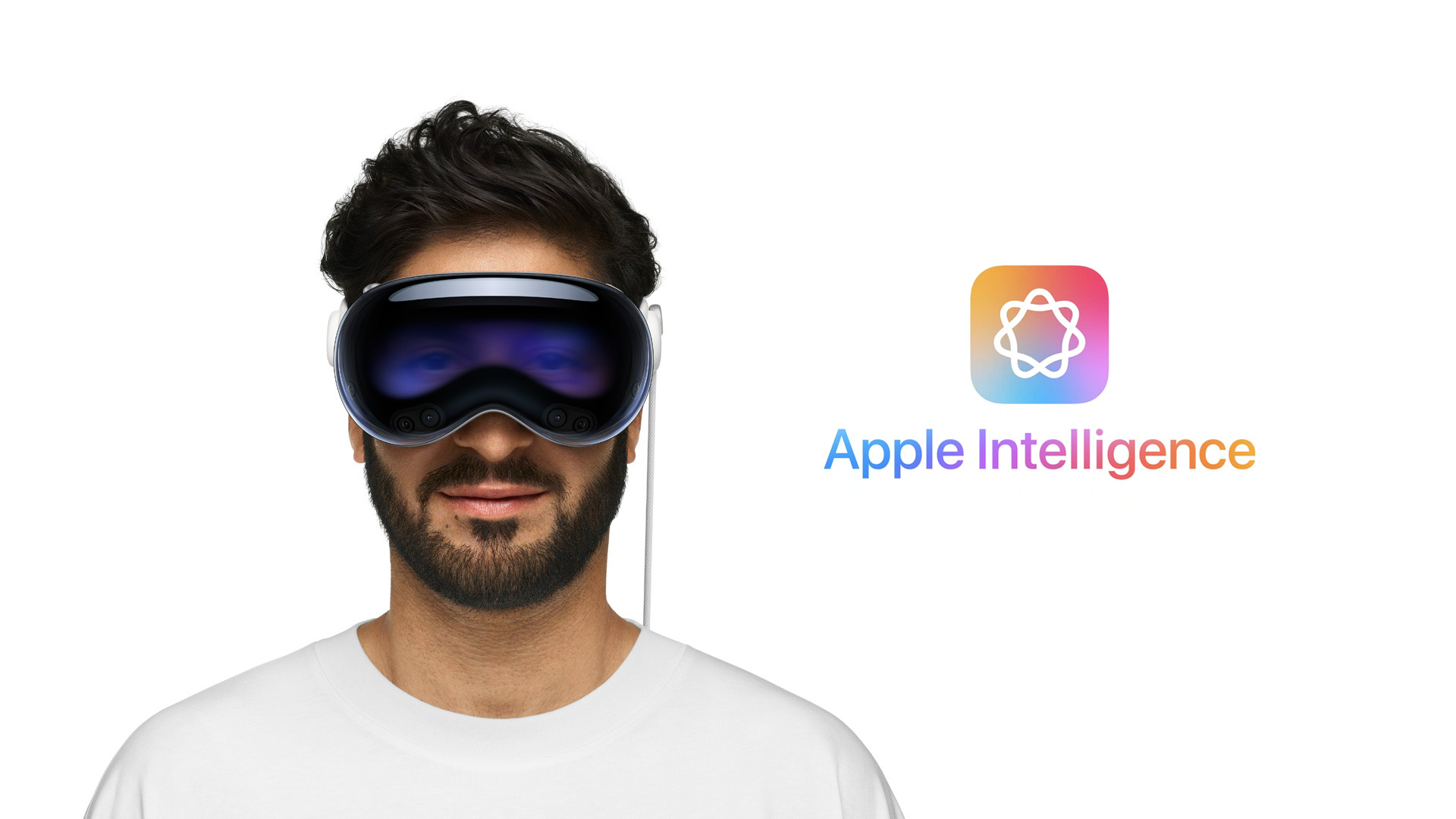
The next major update to Apple Vision Pro is said to bring Apple Intelligence, a new spatial content app, and an improved guest mode.
The post Apple confirms: Vision Pro will get Apple Intelligence in April appeared first on MIXED Reality News.
Andrew Eiche didn’t exactly have to interview for his job at Owlchemy Labs back when they were finishing Job Simulator.
The question was whether he wanted to move to Austin, Texas.
Speaking with us roughly a decade after making that move with a series of credits to his name including some of the most used VR games of all time, Eiche said he called into our stream this week from a guest room in his home equipped with a bed that can fold up in case he needs space for VR.
“I got accused of never being offline,” Eiche says. “Work is one thumb tap away.”
Eiche’s hour and a half conversation with us amounted to a kind of “career retrospective” looking back at a decade in VR development, following our first such broadcast with Darknet and Ironstrike creator E McNeill.
The stream started with Don Hopper in the background playing single-player games Job Simulator, Vacation Simulator, and Cosmonious High, as I talked with Eiche from the UploadVR Studios. By the end of the show the three of us were gathered around the campfire in Dimensional Double Shift as Eiche shared with us a clever strategy when you’re low on time and have too much work to do in VR.
Lighting your own simulated digits on fire quickly cooks held items.
Humor that players make for themselves is the most potent kind of joke in their VR games, Eiche suggested over our play session. As Don played the games and Eiche shared anecdotes, like the rat exterminator who came to Owlchemy’s office and suggested they should have been making League of Legends, we started to understand what changed about game mechanics and roleplay across each of the titles.
Eiche’s conversation with UploadVR comes during a turbulent time for the VR and gaming markets. He spoke on the record with UploadVR recently for our article covering Meta’s evolution “From Quest To Horizon“, so during this time with Eiche we focused on the games at hand instead of that broader conversation.
Still, you can see us begin to touch on the subject at various points. We talk about Horizon Worlds‘ reliance on controllers and mobile input, for instance.
Overall, the stream shows us how Google’s key investment in hand interactions from 2017 delivers us in 2025 a path forward for VR that relies only on your hands for a safe social playground online.
I ended the conversation asking Eiche to speak with us about the future of VR as a medium. While we encourage you to check out the whole stream for a look at a path through 10 years of VR development, I thought it worth clipping that out for us to reflect on.
“What you’re really going to see happen is, when you can combine the experiences that keep you engaged in the immersive, that’s when the magic’s going to happen because the converse of immersive is every time I have to look at my phone or my watch, we’ve also failed, right? So how can I have these fully immersive spaces and continue to engage with my two dimensional workflows without missing a beat in these spaces? That’s the entryway to mass market. That’s where this whole thing goes. As people go, wow, I’m experiencing one of the really cool immersive films that are out there, or I’m doing Puzzling Places, right? And I get a message in Puzzling Places or Walkabout. I get a message, right? Those games are kind of in the zone games. And you go, oh, I have to answer this Slack message. Right now, I have to take off my headset and look at my phone…but if I could just pop up Slack, answer it, close it, the game doesn’t even exit, and I’m off and running. That’s incredible.”
“And then you know what’s gonna happen? I’m going to exit Walkabout later on and go, well, I’m already in my headset. And I already know how to use Slack in my headset. Why not just keep using it? That’s how the iPad worked. That’s how the watch stuff worked. That’s how the phone worked. That’s the playbook. That’s where the future is. And I think we’re close to it. And the real question looking forward is, can we create a space for the 2D content to exist within the immersive without becoming so obsessed with the 2D content that we forget what made this platform so special?”
Silent North brings the VR zombie survival game from the Ghosts of Tabor studio to Quest and Steam this March, starting with an early access alpha.
Developed by Combat Waffle Studios (Ghosts of Tabor, GRIM) and published by Beyond Frames Entertainment, Silent North is a new PvPvE VR shooter set in the Alps. Tasked with fending off the harsh winter environment and zombies alike, you’ll need to survive against the infected hordes and other survivors as you fight for the scarce supply of resources.
Survival in this harsh environment involves managing basic needs like sustenance and warmth, all while looting different villages for supplies. You can form alliances with other players if you wish, and the developer states the day and night cycle provides strategic opportunities like offering the cover of darkness for stealth or spotting enemies from afar in daylight.
Next month’s launch follows the recent early access alpha for GRIM, a Rust-inspired VR survival multiplayer sandbox game. Co-developed by Spoonfed Interactive and Combat Waffle Studios, this PvPvE game sees you trying to survive while fighting for resources after efforts to colonize Mars failed.
Silent North arrives in early access on March 20 on Quest and Steam, and pre-orders are live now on the Horizon Store with a 15% discount. The Steam version will also receive a 15% discount at launch.
visionOS 2.4 will bring Apple Intelligence to Vision Pro, a Spatial Gallery app, an iPhone app for remote installs, and a new iPhone/iPad-driven guest flow.
The last significant visionOS update was 2.2 in December, which brought the Wide and Ultrawide Mac Virtual Display modes. visionOS 2.3 instead focused on bug fixes and security updates.
The first visionOS 2.4 developer beta is available to install now, and Apple says the stable release will arrive in April. Note that the first beta does not contain all the coming features.
To enable downloading beta Apple operating systems you just need to sign in with your Apple ID on the Apple Developer Center website at least once. You don’t need to join the paid Apple Developer Program, but you will need to accept the terms of the Apple Developer Agreement.
Then, in the headset, navigate to Settings -> General -> Software Update -> Beta Updates and select “visionOS 2 Developer Beta”.
Note that installing a beta version of an operating system is only recommended if you’re willing to accept bugs, instability, and the small chance it could put your device in a state requiring a factory reset. Some apps may even stop working. In exchange, you’ll get to try out the new features and improvements in advance.
Apple Intelligence is the company’s name for its generative AI features. Some features run on-device, while others are offloaded to the company’s Private Cloud Compute (PCC) servers, and certain requests reach out to OpenAI’s ChatGPT, if you give permission for that.
Apple Intelligence arrived on iPhones (15 Pro and later), iPads (M-series or A17 Pro chips only), and Macs (M-series chips only) late last year, and Apple didn’t say at the time whether Vision Pro would get it too.
With visionOS 2.4 Apple is bringing the following Apple Intelligence features to Vision Pro: Priority Notifications, Notification Summaries, Smart Reply, Memory Movie creation and Natural Language Search in Photos, Priority Messages & Mail Summaries In Mail, Writing Tools, Image Wand in Notes, Genmoji, and Image Playground.
At launch, Apple Intelligence on Vision Pro will only support US English, with support for “additional languages” coming later this year.
Apple Intelligence will automatically decide which notifications are most important, such as messages from loved ones about imminent events, and surface them at the top of the notification stack.
Further, longer notifications and groups of notifications from the same apps will show an AI-generated summary in place of its content. We should note that this feature has been widely criticized for sometimes misconstruing the content of notifications, however.
Tapping the notification summary will bring up the original notification.
Smart Reply “identifies questions and suggests relevant replies” to messages and emails, which Apple says will let you “easily respond to texts and emails with just a few taps” on Vision Pro.
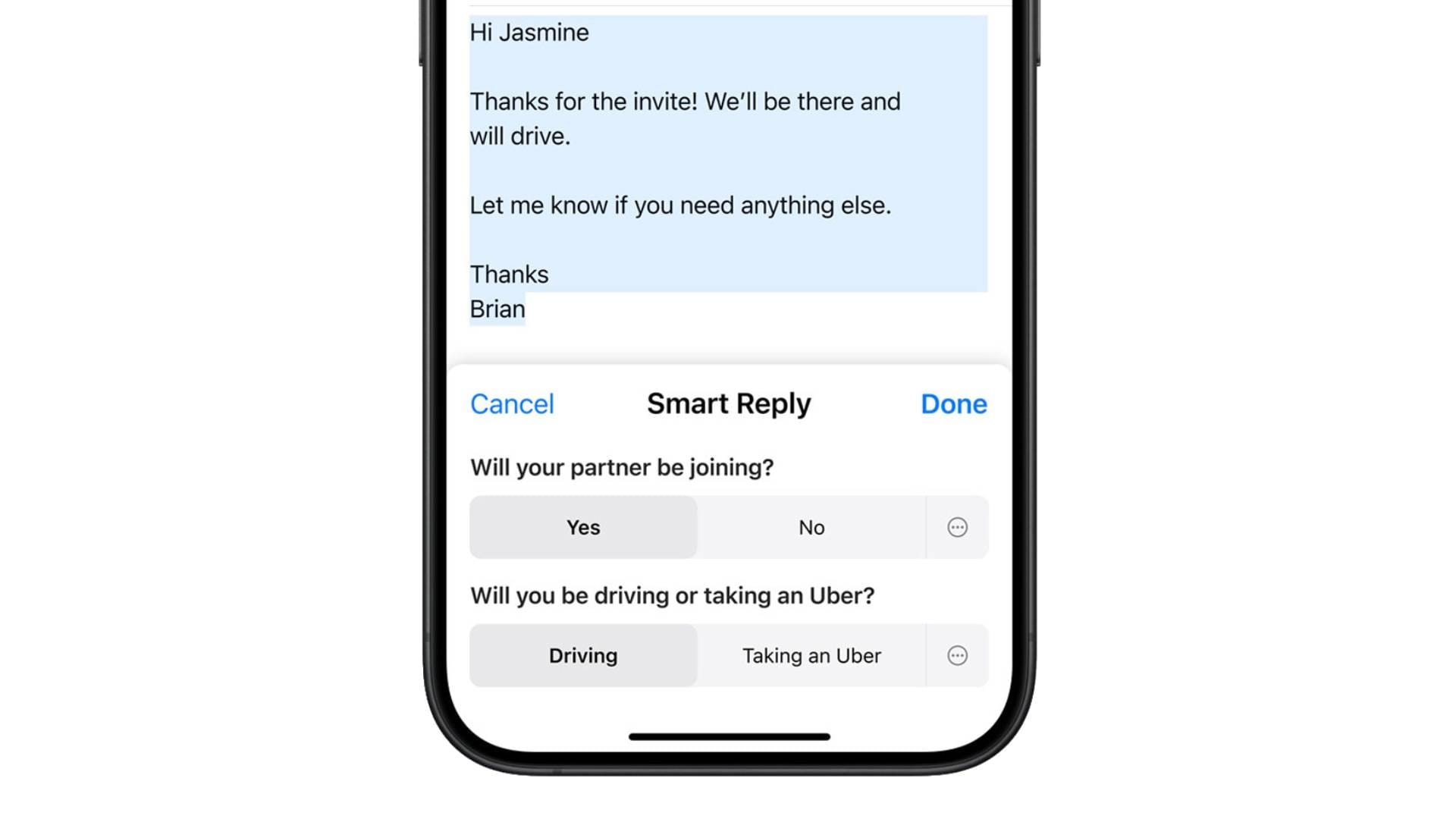
This feature should be particularly useful for when you don’t have a Bluetooth keyboard connected at least, since floating virtual keyboards are slower to type on than touchscreen keyboards.
In the Photos visionOS app, Apple Intelligence will bring the ability to generate a Memory Movie, as well as more advanced search.
“Simply type a description, and Apple Intelligence will pick out the best photos and videos, craft a storyline with chapters based on themes identified from the photos, and arrange them into a movie with its own narrative arc and a soundtrack,” Apple explains.
Meanwhile, the Natural Language Search feature promises to let you find photos and videos in your library by just describing them.
Just like with notifications, in the visionOS Mail app Apple Intelligence should surface the most salient messages at the top of the stack.
Each email in the list will have an AI-generated short summary of its content, instead of just the first line as in traditional email clients.
Further, upon opening an email you can choose to AI generate a medium-length summary of its content.
The Writing Tools feature will offer four kinds of tools for “rewriting, proofreading, and summarizing” long-form text that you type or dictate “nearly everywhere” in visionOS, including Mail, Notes, and many third-party apps.
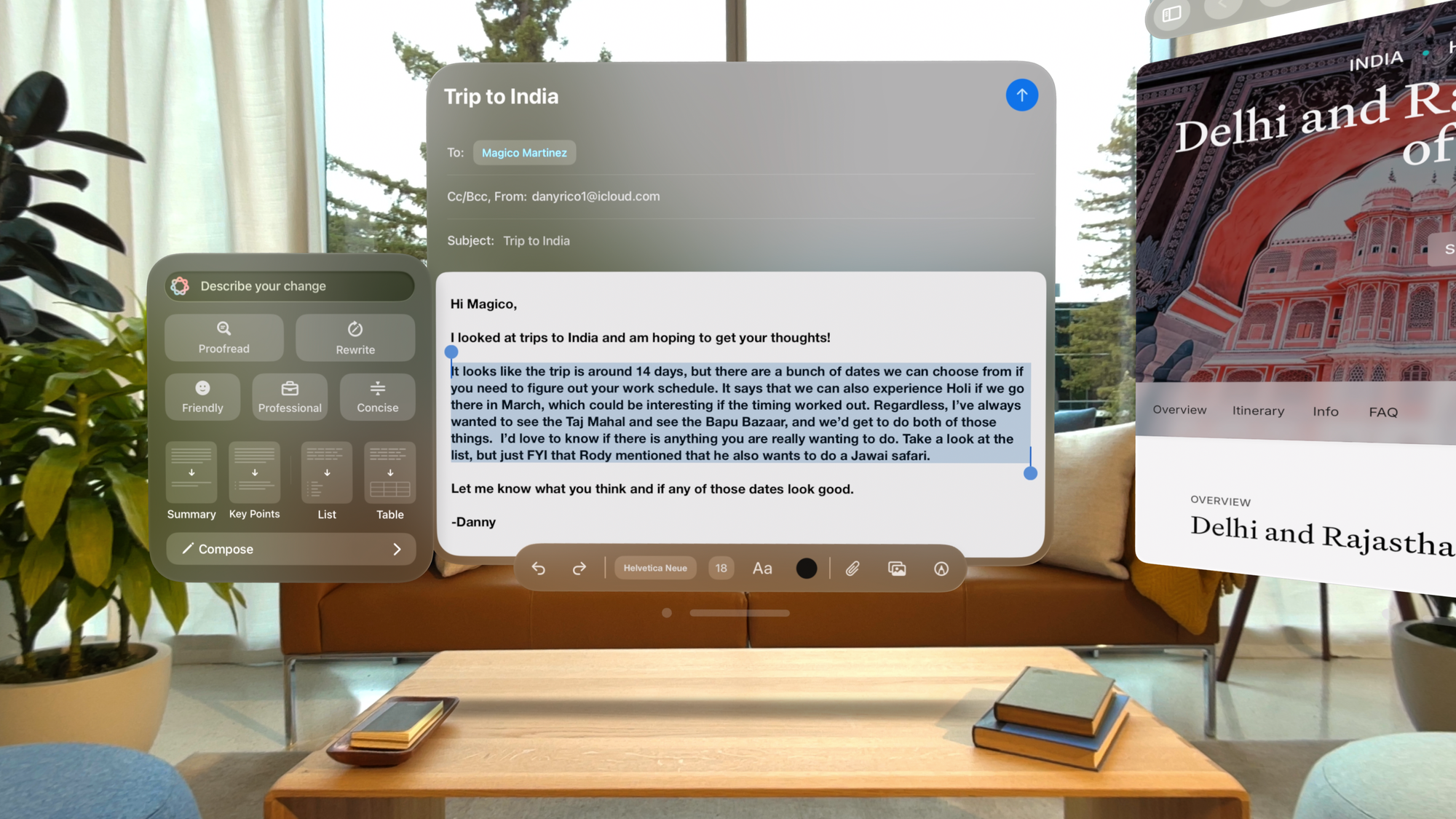
These tools are:
Image Wand in the visionOS Notes app will let you “create images based on rough sketches you create”, or AI generate an entirely new image “based on words and images from the surrounding area”.
Genmoji is Apple’s feature to generate your own custom emoji in iMessage by typing or speaking a description of it.
Within iMessage, these Genmoji can “be added inline to messages, shared as a sticker, or sent as a Tapback”.
Image Playground lets you AI generate “fun and unique images from themes, costumes, accessories, and places”.
According to Apple, “users can add their own text descriptions, and can even create images in the likeness of a family member or friend using photos from their photo library.”
Image Playground is integrated into apps like Messages and Freeform, and is also available as a new standalone visionOS app.
Spatial Gallery is a new visionOS app from Apple that “features a curated collection of spatial photos, spatial videos, and panoramas from artists, filmmakers, photographers, and more.”
At launch, Apple says it will offer “remarkable perspectives from photographers like Jonpaul Douglass and Samba Diop; new stories and experiences from iconic brands including Cirque du Soleil, Red Bull, and Porsche; behind-the-scenes moments from Apple Originals like Disclaimer, Severance, and Shrinking; and special moments from top artists.”
Rather than being an open platform like YouTube or Vimeo, which added spatial video support in October, Apple’s Spatial Gallery sounds like a highly curated closed platform, offering quality over quantity.
Spatial Gallery will be available in all Apple Vision Pro countries except for mainland China.
Apple says the new Apple Vision Pro app for iPhone will let you remotely queue apps to download & install to your headset, see device information, and browse curated recommendations of the best visionOS content.
The My Vision Pro interface will show device tips, the current visionOS version, and the serial number, and will let you set up Personalized Spatial Audio by scanning your face shape with your iPhone’s TrueDepth sensor.
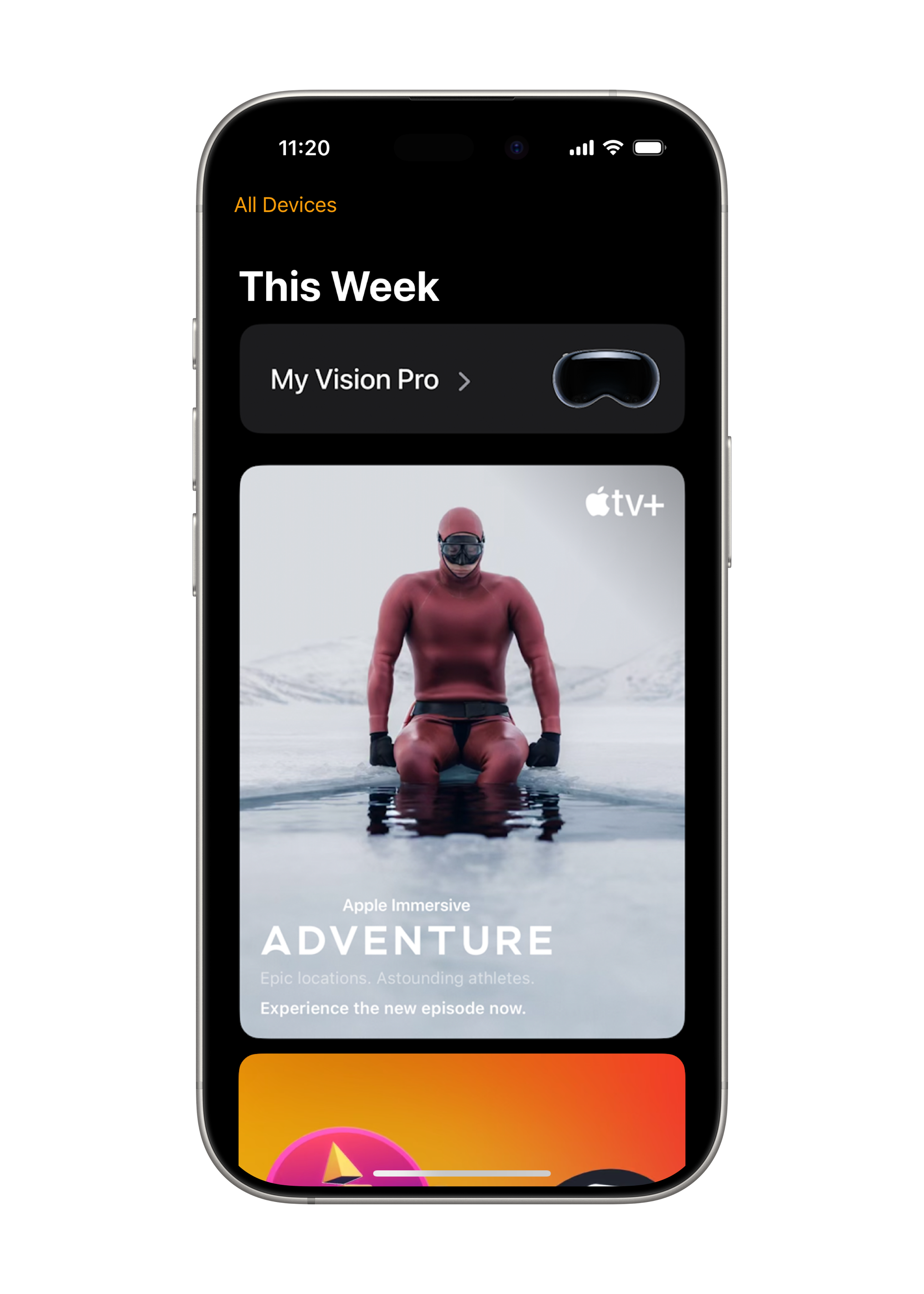
Meanwhile, Apple says the Discovery interface will show “popular apps and games on the App Store; nearly 300 3D movies, Apple Immersive titles, and more video content on the Apple TV app; and the latest spatial photos, spatial videos, and panoramas featured in the Spatial Gallery”.
The Apple Vision Pro app will be part of iOS 18.4 (stable), and will also be downloadable from the iOS App Store.
Currently, initializing Guest User mode on Vision Pro requires putting on the headset and unlocking it first, and if there are any issues you need to adjust for after the guest puts the headset on, you need to do that all over again. From experience, this can lead to frustration.
With visionOS 2.4, Apple is adding the ability to approve Guest User mode from a nearby iPhone or iPad signed into the same Apple Account.
As with the in-headset Guest User interface, this iPhone/iPad interface will let you choose which apps the guest has access to, as well as initiate View Mirroring with AirPlay.
Editor’s Note: Article updated briefly after publication to remove mention of Keynote, which Apple removed from draft press materials.
Neko Atsume Purrfect is celebrating ten years of kitty consumption with a new event, featuring crossovers with Breachers, Walkabout Mini Golf, and Gorilla Tag.
Released in 2023, Neko Atsume Purrfect Kitty Collector is putting the cat in capture with their new collaboration event, Nekomania, letting you seek out your cute feline mascots across different VR games. Across the participating Quest games, players can complete various missions to obtain feline-themed items and Easter eggs across unique collectibles.
The official website features the full rundown, but here are the VR games participating in the collaboration event:
The Neko Atsume series began life as a casual mobile game and has since spun out onto VR, first in 2018 for the PSVR and then in 2023 with Neko Atsume Purrfect Kitty Collector on Quest. In our first impressions, we found its simple gameplay and mixed reality support to be a boon for newcomers to VR, saying, “Hit-Point’s done a nice job adapting this virtual cat playground for VR, and the casual pick-up and play approach makes it a better fit for Quest than it ever was on PSVR.”
Neko Atsume Purrfect Kitty Collector’s Nekomania event kicks off on February 21 at 10am PT on Quest, ending on March 20 at the same time. It’s also on sale for half price at $9.99 across this event.

One True Path – Part 1 presents an intriguing genre-bending VR adventure, and the full release arrives today on Quest & Steam. Here are our full impressions.
Previously released in early access, One True Path is a narrative-driven game from the team behind A Fisherman’s Tale, InnerspaceVR. Now entering full release, you’re tasked with uncovering the mystery behind the murder of Jack Stevenson, author of the Fiendish Fates gamebook series. This involves exploring three of his wildly different worlds that include a post-apocalyptic western, classic sci-fi and gothic mystery.
We went hands-on before today’s launch on Quest 3, taking an hour to complete Part 1. Jack’s narration while his lifeless body remains collapsed on his desk immediately sets an intriguing tone that held my interest throughout. Without spoiling anything, I’m impressed by how well InnerspaceVR balances these entertaining narratives across each world while offering new insights into Jack’s life. This adventure varies your journey across Jack’s novels at set intervals, instead of sticking to one story at a time.
Each novel provides different abilities that match the novel’s tone, even if they aren’t especially in-depth. Shooting enemies as an outlaw cowboy after stunning them with an electric blast is pretty fun, as is slicing through undead skeletons with a fancy sword. The sci-fi novel is more like a puzzle game, offering welcome variety beyond a new environment. For example, one sequence involves switching between bodies and moving them to power up a room before you can leave.
I’m not someone who ever read through any ‘Choose Your Own Adventure’ style gamebooks, though I appreciate how the game leans into this theme despite the linear progression. You don’t have much freedom in One True Path usually beyond deciding which book’s route to take first. That said, accidentally encountering a “bad ending” gave me a good laugh as I realize how foolish that decision was in hindsight.


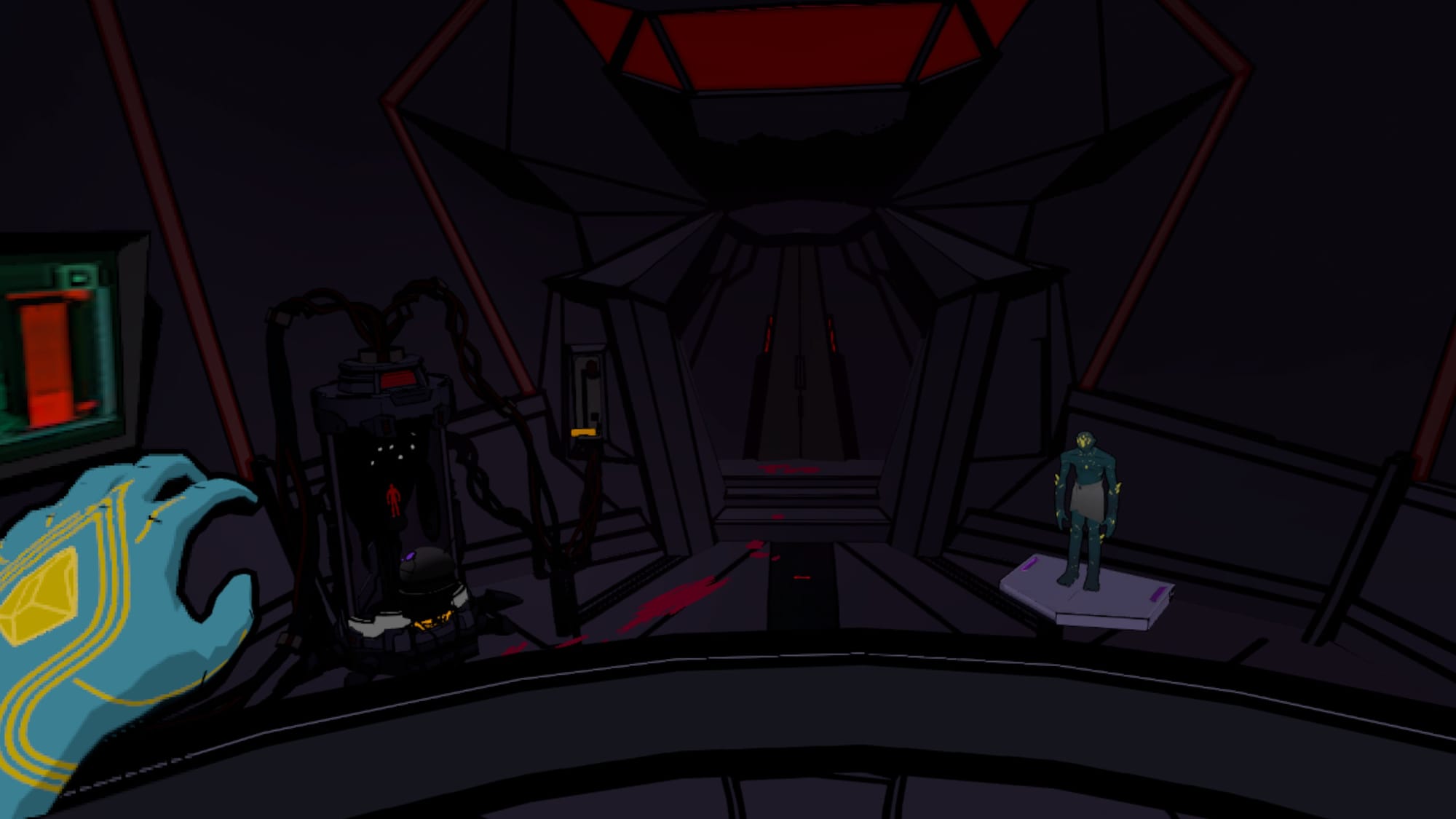

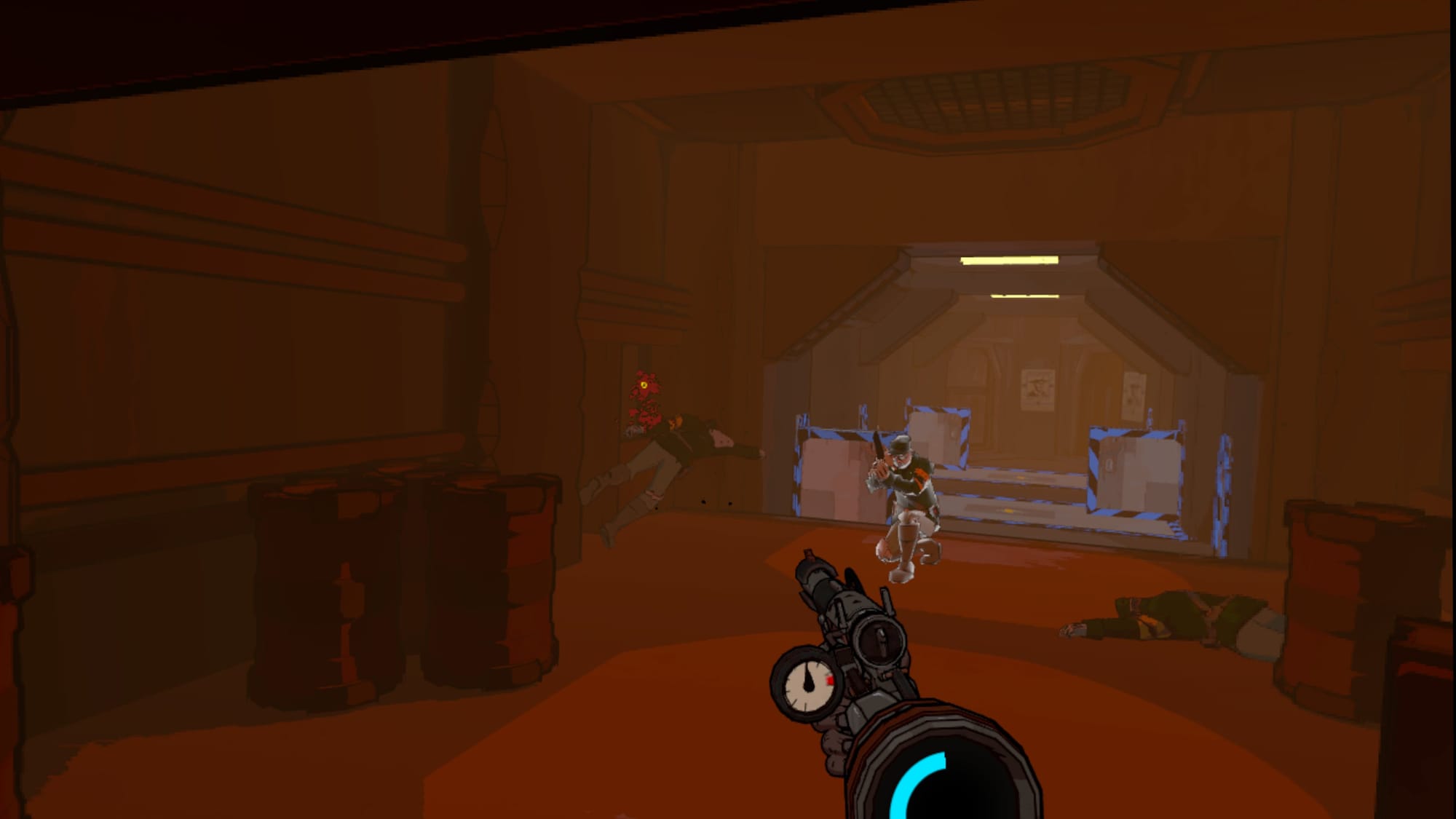
Screenshots taken by UploadVR on Quest 3
Whether you’re back in his office or exploring a novel, One True Path also restricts movement to teleporting between set locations. As someone who prefers stick-based locomotion, it’s a minor disappointment though hardly a dealbreaker, yet there are some moments where the visuals were blurrier than expected. Still, the cel-shaded presentation generally looks great, and that’s backed up by a fitting soundtrack.
Presently, there’s no indication for when Part 2 will follow and while this isn’t a particularly big journey yet, it didn’t need long to grab my interest. InnerspaceVR previously called this a pilot for its upcoming project and going by Part 1, I’d say One True Path is off to a great start. I’m keen to see where the studio takes this concept next.
One True Path is out now for $1.99 on Steam and the Meta Quest platform, and the full release has introduced support for Quest 2.


Korea-based studio Pixelity announced it’s currently developing an XR game based on the hit ’90s anime Neon Genesis Evangelion (1995).
Pixelity says in a blogpost it’s signed an official licensing agreement with Studio Khara in Japan to make the XR game. Planned to release in three parts, and based on the story of all 26 episodes of the anime, Pixelity says the first installment is already in production and targeting release in 2026.
If you’re an unwashed Evangelion fan (like us), you already know the score. In short, the anime sparked a massive resurgence of anime in Japan during the 1990s, going on to become a cultural phenomenon that influenced numerous successor anime.
Set in 2015—twenty years ahead of its actual 1995 air date—the story follows Shinji Ikari, who is chosen as a pilot for the humanoid combat weapon Evangelion, humanity’s last line of defense against the Angels mysterious beings attacking the futuristic city of Tokyo-3.
The studio hasn’t mentioned specific platforms yet, although the game is said to allow players to “explore various locations with an immersive XR experience, following the same timeline and events as Neon Genesis Evangelion, while completing missions and enjoying dynamic battles.”
“The game will feature collaboration play elements where players interact with various characters from Evangelion, which is expected to be an attractive point for existing fans. Pixelity aims to provide a dynamic experience typical of action-adventure genres,” the studio says.
Founded in 2017, Pixelity has created a number of VR games, including Puttzzle (2023), Crazyworld VR (2022), and Rise of the Fallen (2018). The studio is also currently working on two other VR games, The Patcher and Teahouse of Souls.
While this isn’t the first time Evangelion has been adapted to VR headsets, it will be the first official at-home game for the series. In 2017, Bandai Namco-backed VR studio ‘Project i Can‘ released the four-player Evangelion VR: The Throne of Souls at VR ZONE in Shinjuku, Japan, which was available there for a limited time.
The post ‘Neon Genesis Evangelion’ is Getting an Official XR Game with First Installment Coming in 2026 appeared first on Road to VR.


Ghosts of Tabor studio Combat Waffle is nearing launch of Silent North, the studio’s next VR shooter that promises plenty of multiplayer zombie survival action, with Quest and Steam early access launches planned for sometime in March.
Published by Beyond Frames Entertainment, Silent North brings you high up in the Swiss Alps, forcing players to hunker down and survive a world not only overrun by zombies, but also your fellow man, who has a damnable penchant for killing and looting (just like you).
That said, players can team up or go it solo while scavenging for gear and defending against a “never-ending supply of hungry corpses,” the studio says.
“Littered with PVPVE action, players will not be able to escape an encounter with players, or the infected,” the game’s description reads. “Whether you’re in the mountains or in the plains. Experience intense adrenaline pumping firefights to stay alive, or prey on your enemies to survive in the wilds. But tread carefully, there may be other players hiding and waiting to strike on you.”
Silent North has now launched pre-orders on Horizon Store, priced at $17—a 15% discount from its $20 launch price. Starting today, it’s also available to wishlist on Steam, which will include a 15% discount at launch.
While launching into early access in March via Steam and the Horizon Store, the studio hasn’t announced when it’s coming to other target VR platforms, which includes PSVR 2 and Pico headsets.
Update (February 21st, 2024): The studio has clarified that the release is planned for March, but a specific date is not yet set in stone.
The post ‘Ghosts of Tabor’ Studio’s Next Shooter ‘Silent North’ Launches into Early Access in March appeared first on Road to VR.
The latest Drums Rock DLC music pack includes five of Linkin Park’s most recognizable songs.
Now live on Quest, Steam, and PlayStation VR2, the new tracks are pulled from the band’s year-2000 debut album Hybrid Theory, and its 2003 follow-up Meteora. Featuring some of Linkin Park’s biggest hits, these songs are available separately or as part of a bundle. Here’s the full set list:
Drums Rock is an arcade VR game in which players drum their way through hell, fighting demons and monstrous bosses to the beat of legendary songs. Throughout the last two years, Drums Rock received a healthy series of updates, including songs from Green Day and Disturbed, Simple Plan, Cyberpunk 2077, and more.
Drums Rock and the Linkin Park Music Pack DLC are available now for the wider Meta Quest platform, PS VR2, and Steam.
Alien: Rogue Incursion’s Quest 3 patch with visual and performance improvements has been delayed until next week.
Previously due this week following the recent Alien: Rogue Incursion launch on Quest 3, developer Survios announced that patch 1.01 has been briefly pushed back. The studio confirmed this is because “some patch elements needed more time to ensure they meet our quality bar,” taking this decision to prevent the introduction of any new issues.
Reaffirming what the studio advised UploadVR following our recent hands-on impressions, Survios shared some highlights that patch 1.01 seeks to address. We’re still planning to revisit Alien: Rogue Incursion on Quest 3 once Patch 1.01 becomes available, and you can find the promised improvements listed below.
Alien: Rogue Incursion is available now on PS VR2, PC VR, and Quest 3.

A PC VR release for Zero Caliber 2 is “in the works” and the developer confirmed plans for a spin-off game.
Released last year on Quest, you may recall that the initial Zero Caliber 2 reveal confirmed the VR FPS sequel was also heading to Steam. While XReal Games later informed UploadVR that “we’d have to see a really high demand” for a PC VR release, the studio advised earlier this week that the Steam release is back on track.
“We now have a working [PC VR] build – no release date yet as we still have quite a bit of fine-tuning to do. Soon though!” confirmed the team.
Following this news, yesterday then saw XReal Games release Patch 8 for Zero Caliber 2. While notable changes include removing the Christmas-themed items and six new challenges that unlock ‘OSA’ themed skins, the developer also announced it’s working on a new Zero Caliber spin-off. Nothing further was revealed about this upcoming game, and more details will be shared “when the time is right.”
XReal Games also used the Patch 8 blog to highlight “serious challenges” facing VR developers, touching upon similar concerns to our recent report. The studio criticized last year’s App Lab merge for creating “abysmal” store visibility, while pointing to Meta “aggressively pushing” Horizon Worlds, manufacturers redirecting their focus to MR/AR, and more. Despite this, the studio states it’s committed to “keeping the single-player/co-op shooter genre alive” in VR.
Zero Caliber 2 is out now on the Meta Quest platform, and the Steam release date is currently unconfirmed.



Schell Games and Innersloth announced that flatscreen support is coming to Among Us VR (2022), which means crossplay for VR and PC players.
Additionally, the studios announced the VR game is rebranding to Among Us 3D, bringing a first-person perspective to PC users for the first time.
Schell Games confirmed Among Us 3D will allow PC users to join cross-platform lobbies with VR players across all supported platforms, including Quest, SteamVR, PSVR 2 and Pico headsets.
Notably, Among Us 3D is not compatible with the original Among Us (2018) 2D game, which has remained separate since the initial launch of Among Us VR in November 2022.
“With Among Us 3D, we’re excited to bring the first-person perspective to an even wider audience,” said Ryan Hall, Project Director at Schell Games. “By uniting VR and PC players, we’re opening up even more ways to brutally betray your friends—your whole crew can get in on the fun!”
The rebrand is slated to take effect over the next few months, the studios say, which will include updates rolling out across store pages, websites, and in-game branding.
Among Us 3D is also set to include a new in-game currency, called ‘Stardust’, which will ostensibly allow players to purchase cosmetic items, which the studios say will “support the expansion of the game.”
There’s no launch date yet, although it could be fairly soon, as Among Us 3D will be featured in Steam Next Fest, giving players an exclusive early demo before launch.
The post ‘Among Us VR’ to Become ‘Among Us 3D’, Adding Support for Flatscreen PC Play appeared first on Road to VR.
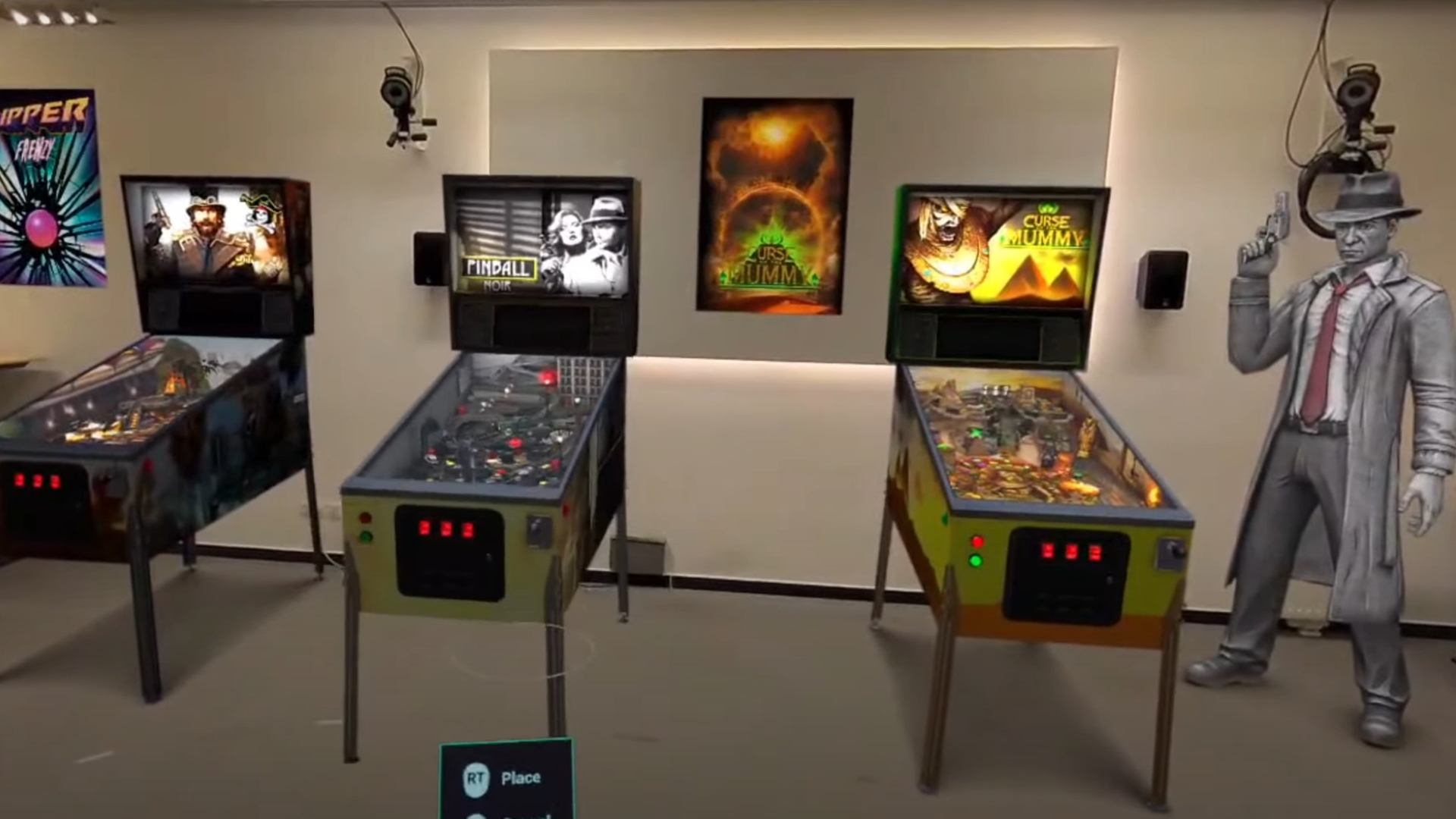
Indiana Jones, Star Trek and more: Zen Studios finally brings the popular pinball tables to virtual reality with Pinball FX VR.
The post Meta Quest: Zen Studios is bringing its million-selling pinball simulation into Virtual Reality appeared first on MIXED Reality News.
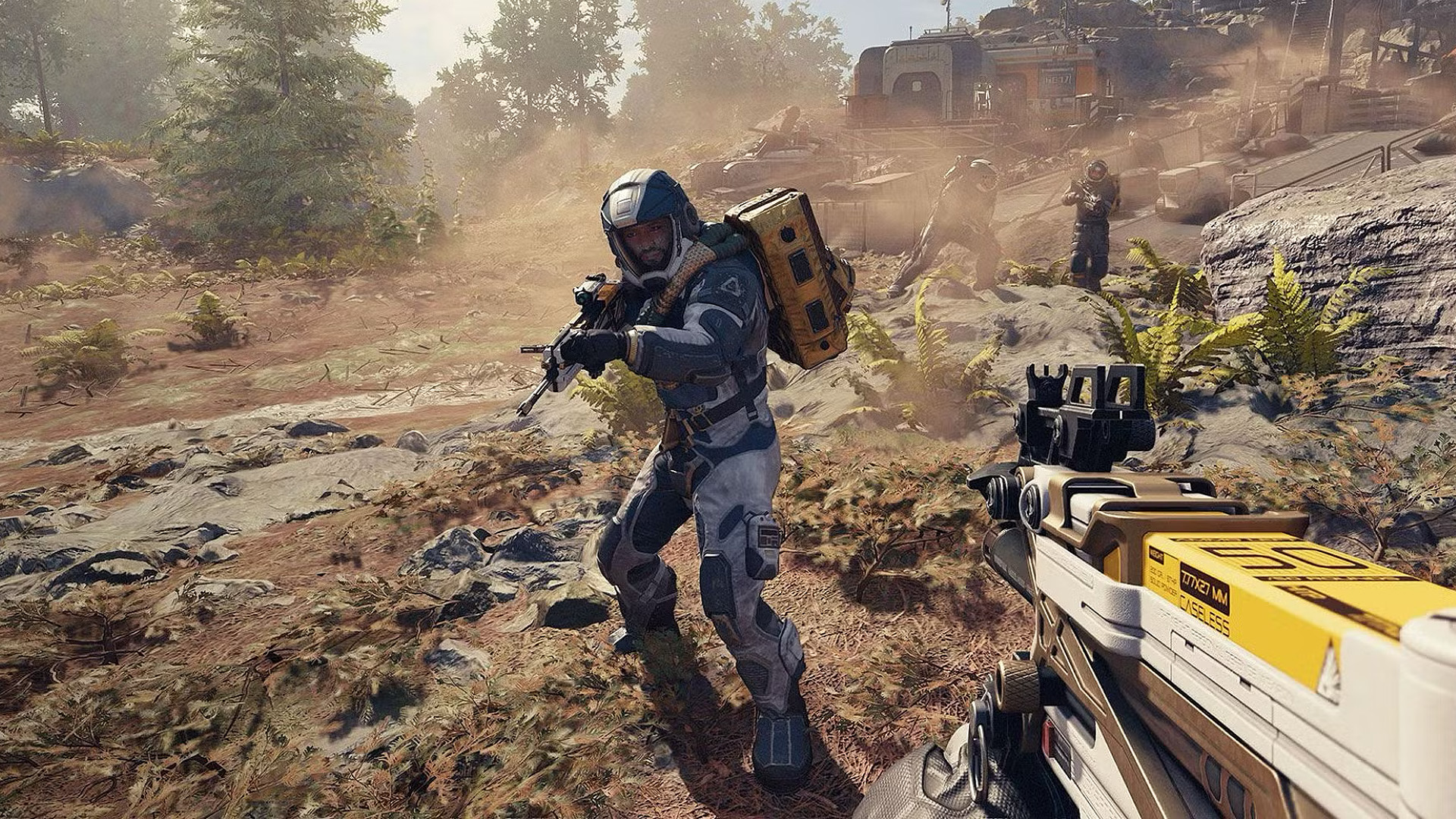
The first VR mod for Starfield has been released. It features full stereoscopic rendering and 6DoF head tracking.
The post You can now play Starfield in virtual reality thanks to a mod appeared first on MIXED Reality News.

Combat Waffle, the makers of Ghosts of Tabor, launch the pre-sale of the VR zombie survival shooter Silent North on Meta Quest.
The post Combat Waffle’s next VR shooter: Silent North’s Meta Quest release is getting closer appeared first on MIXED Reality News.
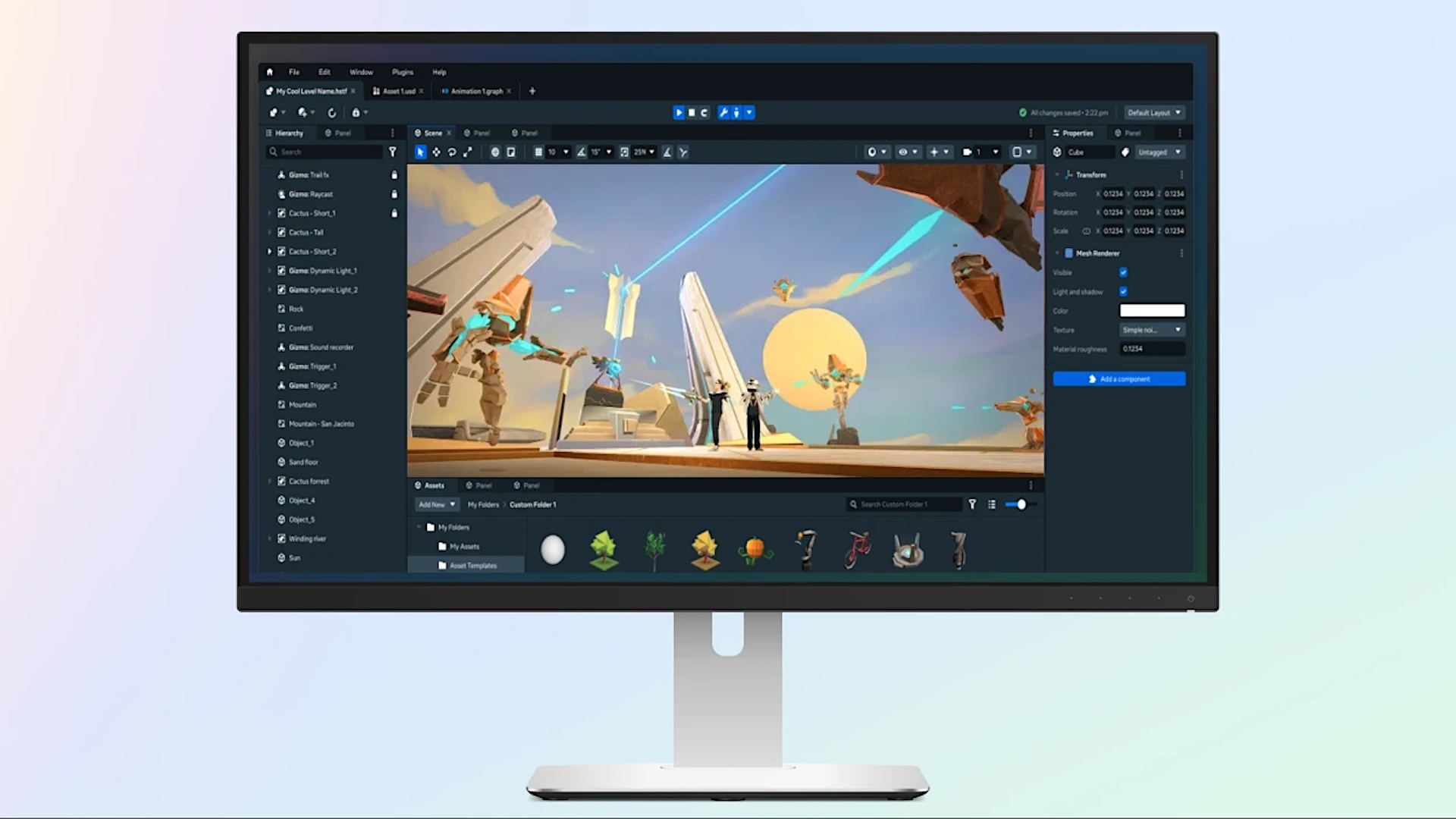
Meta has released the Meta Horizon Worlds Desktop Editor, a PC program that allows you to create worlds for Meta’s metaverse platform.
The post Meta releases Horizon Worlds Desktop Editor into Early Access appeared first on MIXED Reality News.
An official Neon Genesis Evangelion XR game is in development, aiming to kick off a new trilogy based on the anime.
Developed by Korean studio Pixelity Inc (Teahouse of Souls, The Patcher), the team announced that it’s signed a licensing agreement with Japanese animation studio Khara, Inc to design and develop the currently unnamed game. Pixelity confirmed the first installment is planned as a trilogy “based on the world and events of all 26 episodes” from the original anime TV series, and it’s scheduled to launch next year.
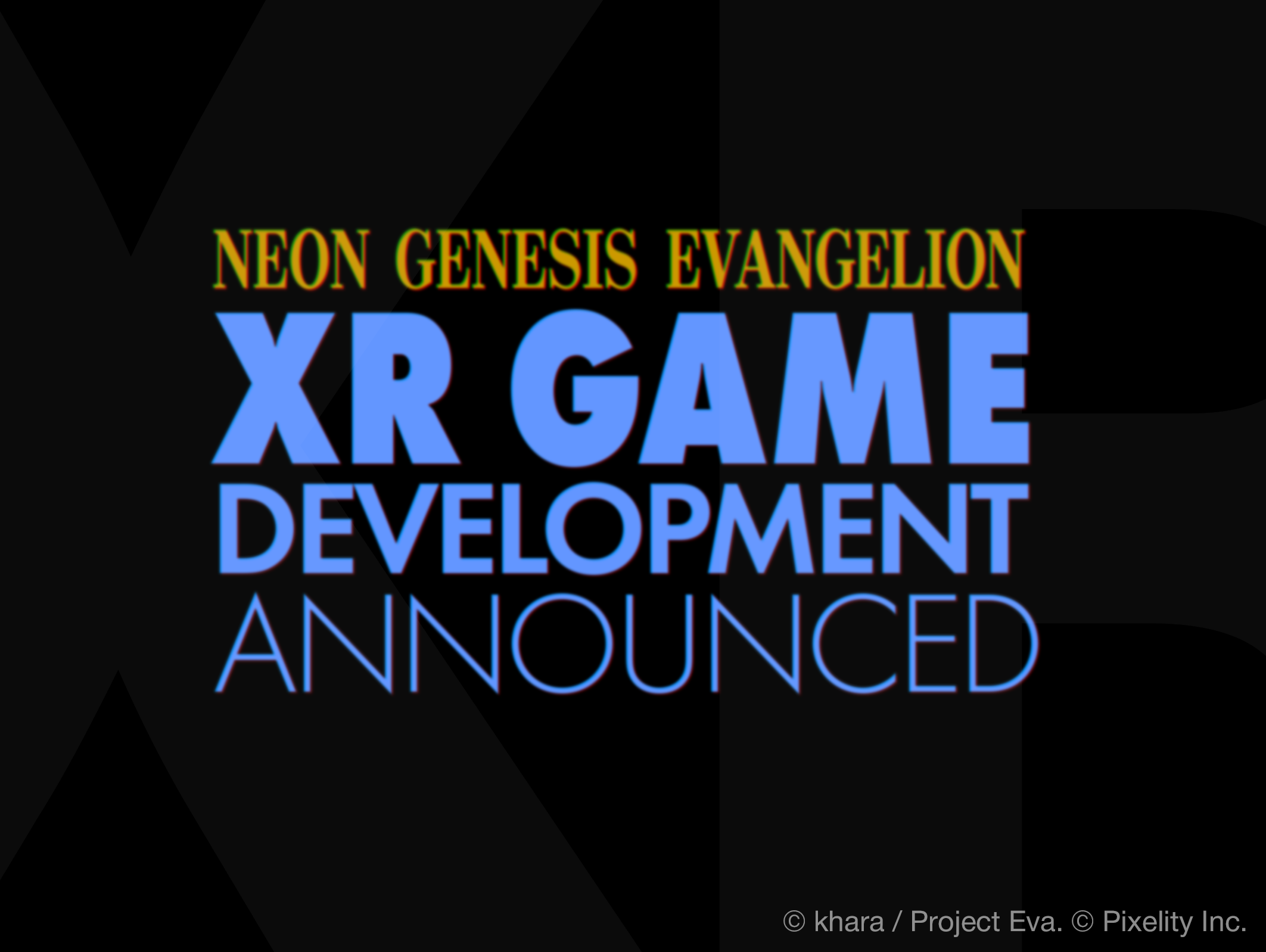
This action-adventure title sees you portraying an original character, letting you explore this world which involves “taking on quests, and engaging in thrilling battles – all while following the timeline and key events of the anime.” Pixelity also advised the upcoming game features interactive and cooperative gameplay with familiar characters. Not much else was confirmed, and the studio states to, “stay tuned for more updates and sneak-peeks about the game”.
Initially aired in 1995, the Neon Genesis Evangelion anime series remains critically acclaimed to this day. Focused on the fight between paramilitary group NERV and the Angels, this isn’t the first time the post-apocalyptic mech series has been adapted for XR. However, these have never been widely available beyond Japanese theme park attractions like Evangelion VR – The Throne of Souls and the Evangelion XR Ride.
No platforms have been confirmed yet, but the first installment for the Neon Genesis Evangelion XR game targets a 2026 launch.


Meta today announced a $50 million fund to incentivize the creation of new and improved content in Horizon Worlds, the company’s first-party social gaming platform. The move comes as many seasoned studios that build self-contained VR apps for the Quest platform are struggling to sustain themselves due to what Meta says is a shifting demographic of headset users.
Since the launch of Oculus Rift CV1 in 2016, self-contained VR apps have been the lifeblood of Meta’s VR platforms, and the primary driver of a growing audience of users over the years. And while these self-contained games and apps still largely define Meta’s XR platform, the company has come to believe that an all-encompassing ‘metaverse’ of connected experiences is the key to its success.
Horizon Worlds is Meta’s attempt at building the ‘metaverse’, where the platform serves as both a destination for playing and for building. Creators can build content inside of Horizon Worlds itself, then publish that content to the rest of the Horizon Worlds community. It’s all social by default, a critical element for one of the world’s largest social media companies.
But with Horizon Worlds available in VR for several years but not achieving a critical mass of users that could satisfy Meta’s desire for scale, the company eventually opened up Horizon Worlds to flatscreen devices like phones and computers with the goal of bringing more people onto the platform. While this invites a larger audience, it also makes the job of creators harder, given the challenge of satisfying the unique affordances of VR vs. those of flatscreen platforms.
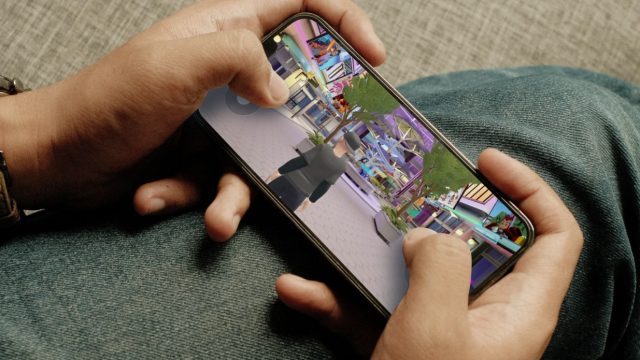
And of course, one of the big hurdles to getting people using and returning to Horizon Worlds is straightforward: content. If there isn’t fun things to do with strong replayability, why would anyone keep coming back, let alone check out Horizon Worlds in the first place?
Meta has made some strides on content by attracting more and more creators to build for the platform and creating some of its own first-party games inside of Horizon Worlds.
Now the company is making another big bet to incentivize creators to build on Horizon Worlds; today it announced a $50 million ‘Creator Fund’ that will pay out to creators of worlds that drive high visits and retention.
“Each month, we’ll pay out bonuses from the Creator Fund to the makers of fun and engaging mobile and MR worlds. Bonuses will be tied to worlds’ contributions to the overall ecosystem across time spent, retention, and in-world purchases, so there are a variety of different ways for creators to maximize their earnings,” the company said in its announcement.
The fund comes alongside a new development tool, the Horizon Worlds desktop editor, which allows creators to build more extensive projects with the speed and power of their computer, rather than being inside a headset. It’s closer to the workflow of existing self-contained VR app developers, who generally build their apps using a game engine like Unity.
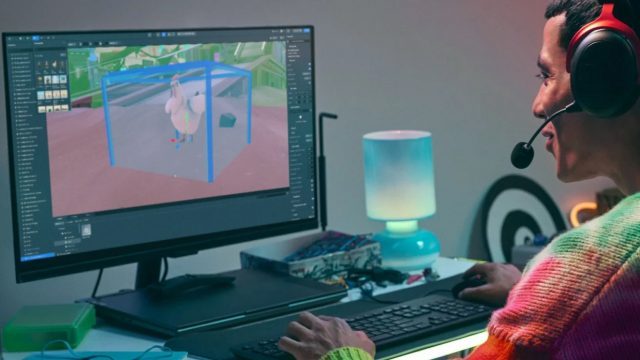
The move is in line with Meta’s growing conviction that Horizon Worlds is essential to its success in this space. Whether VR or not, Meta wants to build its own version of Fortnite—a social gaming platform with massive reach and retention.
Meta’s CTO recently told the teams working on XR and Horizon that the mobile version of Horizon Worlds “absolutely has to break out for our long term plans to have a chance.”
While the new $50 million creator fund is certainly a boon for creators who believe in Meta’s vision for Horizon Worlds, it comes at a tough time for developers of the self-contained VR and MR apps that have kept Meta’s headsets relevant.
The fund is the exclamation mark on the last two years which saw Meta pivot its VR platform to focus much more on Horizon Worlds. The company drastically reorganized its headset interface and mobile companion app—and even renamed them to reflect their new focus—to put Horizon Worlds content in front of more users. In some cases this meant pushing high-quality self-contained apps further from view, sometimes in favor of amatuer content of little value, or ‘cloned’ content that aims to recreate the gameplay of a successful self-contained VR app inside of Horizon Worlds.
A widespread feeling among those third-party developers at the moment is that these changes have significantly harmed their businesses, which rely on sales of their apps to continue supporting existing content and to create new content. The feeling is that Meta is funneling customers away from their apps and onto its own sub-platform (where Meta takes an even more aggressive cut of creator revenue).
A growing list of longstanding studios that have built well received self-contained VR apps have been made significant cuts to staff and footprint, citing the dual challenges of sluggish performance on Meta’s Quest platform and broader distress in the overall gaming industry. Meta even closed one of its own studios that was focused on high-production self-contained VR games.
That’s not to say that Meta hasn’t invested in developers of self-contained VR games & apps over the years.
The company has disbursed hundreds of millions of dollars for the purpose of building alluring VR content, and has aimed to accelerate small indie developers with programs like Oculus Start.
Last year the company created a “multi-million dollar” fund to incentivize new studios to try their hand at creating MR content for Quest, and a similar fund aimed at developers building ‘lifestyle’ apps for Quest headsets.
However, many developers are left with a feeling that even if they have found a sustainable audience for now, Meta’s shifting focus—whether from VR to MR, or MR to Horizon Worlds—makes the Quest platform a volatile and risky place to do business.
For its part, Meta counters that the fading fortunes of some self-contained VR app developers is due not to frequent pivots, but to a demographic shift of Quest users which has seen growing demand for free-to-play apps over paid apps
And indeed, there’s probably some truth to that. Despite being ‘free to play’, Gorilla Tag has become one of VR’s most successful titles ever, reeling in more than $100 million in revenue through in-app purchases. The studio credits its free-to-play model as a major factor in that success, with the low barrier to entry helping to achieve a critical mass of player population.
Other VR apps building on the free-to-play model are also seeing positive signs of momentum, like Digigods, which recently raised $2.6 million in funding to expand thanks for strong growth from players responding to social, free-to-play, and user-generated content.
Meta maintains that paid VR apps will continue to be important to its Horizon platform. The company says it’s continuing existing its usual funding activities for self-contained VR content (though recent reports contest that notion).
The post Meta Announces $50M ‘Horizon Worlds’ Content Fund as Some VR Studios Struggle to Make Ends Meet appeared first on Road to VR.